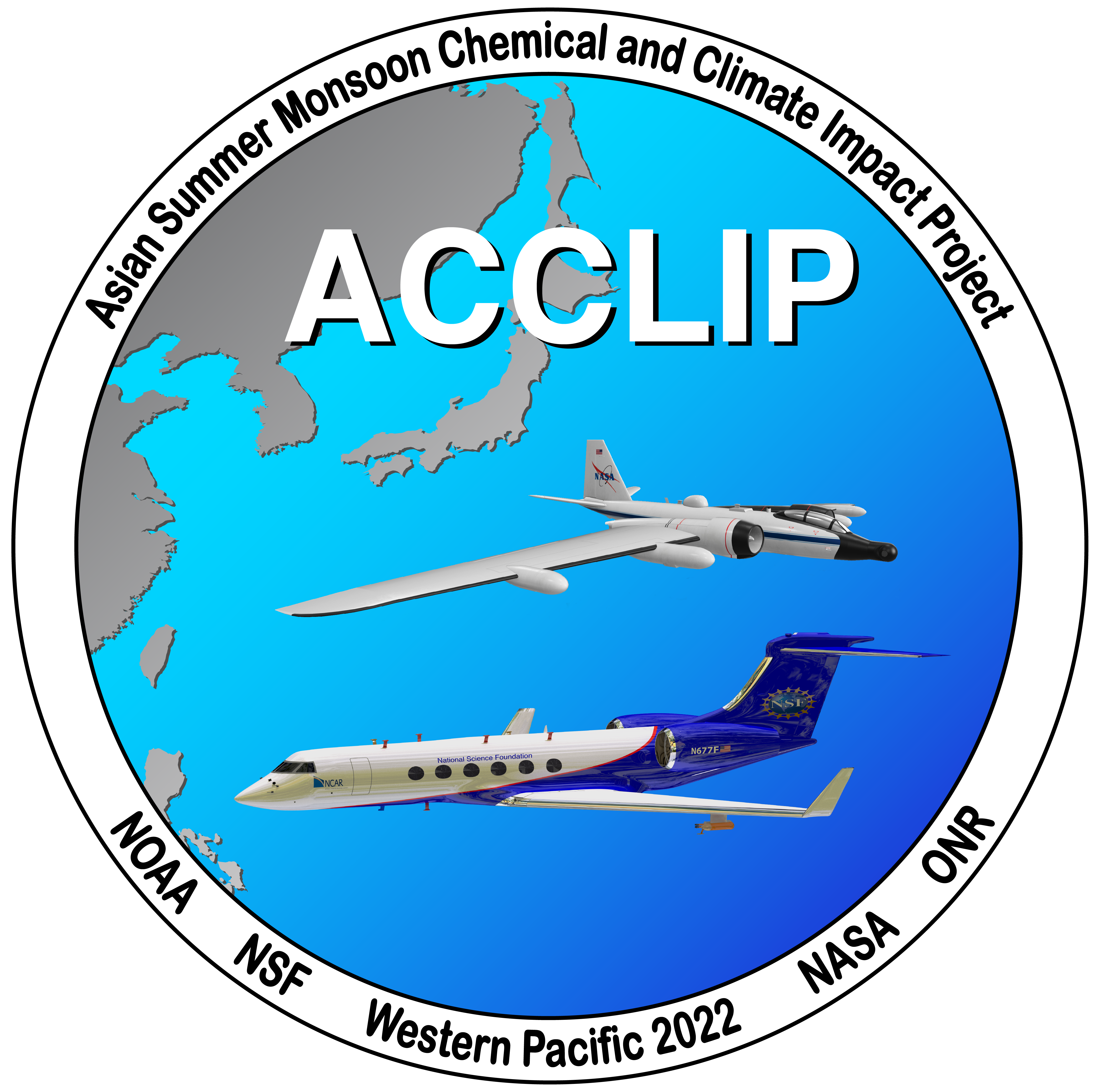ACCLIP
Asian Summer Monsoon Chemistry and Climate Impact Project

The National Center for Atmospheric Research (NCAR) and the National Aeronautics and Space Administration (NASA) will conduct a jointly funded one-month campaign in Summer of 2022 in South Korea: the Asian Summer Monsoon Chemical & CLimate Impact Project (ACCLIP). Two aircraft, including the NSF/NCAR GV and NASA WB-57, are outfitted with state-of-the-art sensors. Approximately 80 scientists from the US and other international research organizations will participate in ACCLIP. The National Science Foundation funds the NCAR portion of ACCLIP, with additional funding from NOAA and the Office of Naval Research.
The Asian Summer Monsoon (ASM) is the most prominent meteorological pattern in the Northern Hemisphere summer. Persistent convection and the large anticyclonic flow pattern in the upper troposphere and lower stratosphere (UTLS) associated with ASM produce a prominent enhancement of chemical species of pollution and biomass burning origins in the UTLS.
The monsoon convection occurs over South, Southeast, and East Asia, a region of uniquely complex and rapidly changing emissions tied to its high population density and significant economic growth. The coupling of the most polluted boundary layer on Earth to the most extensive dynamical system in the summer season through the deep monsoon convection has the potential to create significant chemical and climate impacts.
An accurate representation of the ASM transport, chemical and microphysical processes in chemistry-climate models are needed for characterizing ASM chemistry-climate interactions and predicting its future impact in a changing climate.
The scientific objectives of ACCLIP are:
- To investigate the transport pathway of the ASM uplifted air from inside of the anticyclone to the global UTLS.
- To sample the chemical content of air processed in the ASM to ascertain its role in UTLS ozone chemistry and re-distributing active species and short-lived climate forcers (SLCFs), to examine the roles of Asian pollution and monsoon strength in chemistry and climate, and to understand the two-way coupling between chemistry and climate.
- To obtain information on aerosol size, mass, and chemical composition necessary for determining the ASM's radiative impact, constraining models of aerosol formation, and contrasting the organic-rich ASM UTLS aerosol population with that of sulfate-rich volcanic plumes and the background aerosol population.
- To measure the water vapor distribution associated with the monsoon dynamical structure to evaluate transport across the tropopause and determine the role of the ASM in water vapor transport into the stratosphere.
Principal Investigators
- Laura Pan, NCAR/ACOM
- Paul Newman, NASA/GSFC
NCAR Project Managers
- Pavel Romashkin, NCAR/EOL
- Pei Tsai, NCAR/EOL
NCAR Data Manager
- EOL Archive NCAR/EOL/DMS